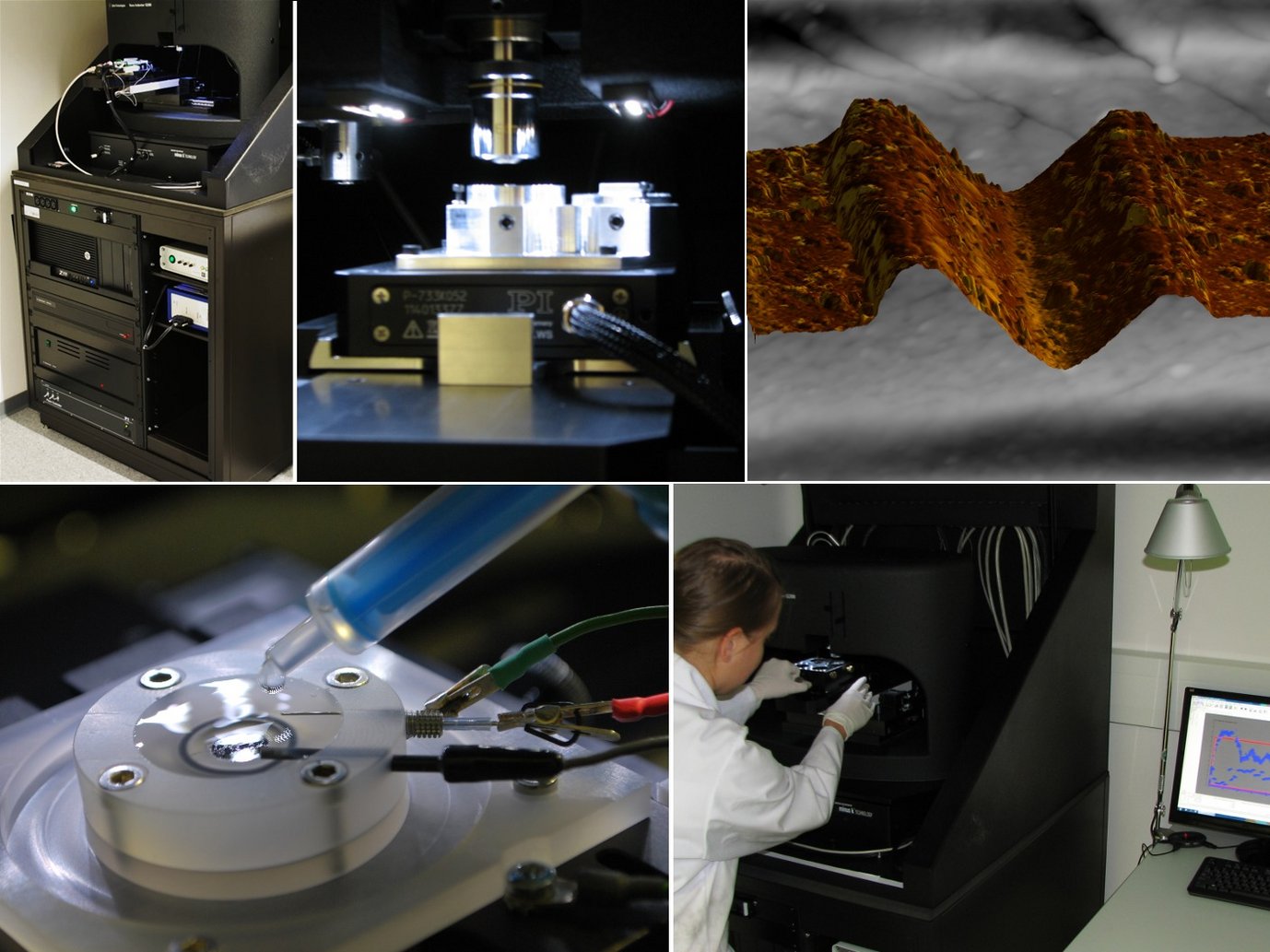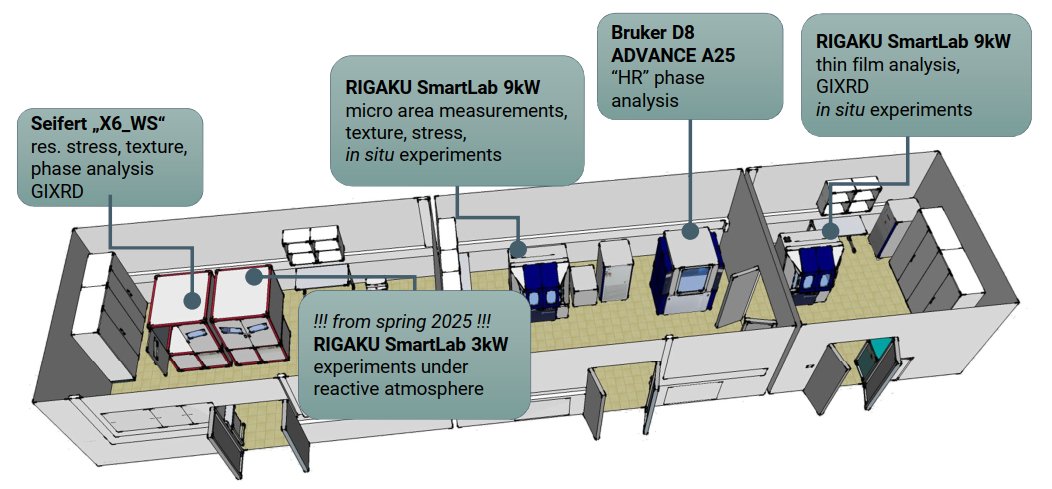X-Ray Diffraction
The X-ray laboratory is equipped with four different diffractometers. In 2012 the complete laboratory infrastructure was recently reorganized in a single x-ray lab. The laboratory equipment is continuously updated. Two new diffractometers were installed in 2019 and a new device was installed 2023. An additional fifth diffractometer for XRD experiments under reactive atmosphere was installed in spring 2025.
A wide range of X- ray techniques are possible:
- phase analysis (qualitative and quantitative)
- residual stress analysis
- texture analysis
- characterization of thin layers
- XRD measurements during load or heat
- XRD measurements under reactive atmosphere (from spring 2025)
The x-ray laboratory could handle different sample geometries:
- powder samples
- constructive parts (maximum weight 10kg)
- small solid samples (minimum beam diameter 0.7mm)
- thin layers
- single crystals
- weld samples




